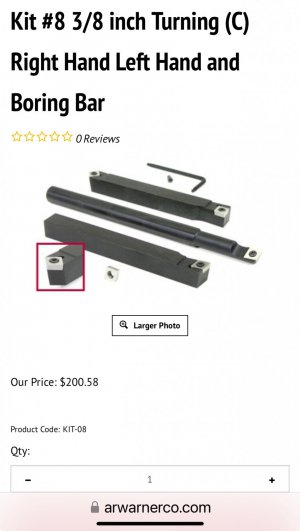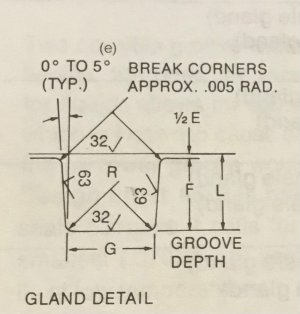I've been watching this thread for a few days and thought it was time to add another opinion. Maybe I'm just old and out of touch, but somehow, I can't follow the logic of spending $140.00 to over $200.00 to cut a few grooves in a $20.00 tool. I know the OP said he'd rather buy inserts than grind a tool, but in this case, I think the effort would be well worth it. In less than 15 minutes and $10.00 in tooling you could grind what you need from an HSS tool blank.
I've done it hundreds if not thousands of times. I currently have a drawer full of tooling (probably a hundred pieces or more) that have been ground to a specific profile for grooving, radiusing, relieving, or other profiles not found on standard turning and facing tools. Often times I take an old tool that has a profile close to what I need and regrind it for the new profile. In this case I think the easiest and least expensive method is to take an appropriate size blank and mark the profile on the end using a radius gauge. You can start with one a little larger than the final dimension just to get it roughed in. Once you're close then use the exact size gauge as a pattern and finish the job.
It shouldn't take more than a few minutes for even the least experienced, and it would add an additional skill to your set. The best thing about learning to grind your own tooling is that you'll quickly find that purchasing a tool for a one-off job is in many cases impossible, and when it can be done often increases the cost of the project exponentially.




